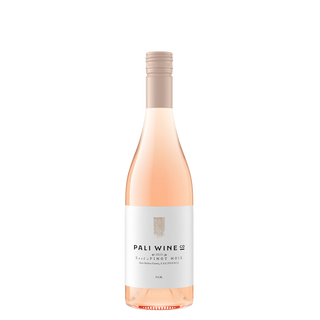Welcome to our latest Harvest Dispatch! Every two weeks, we’ll share behind-the-scenes updates from harvest, along with a special wine tied to the action—at 30% off (woohoo!). You’ll find the deal at the end of the post.
The Dog Days Have Arrived
We’ve reached the home stretch of harvest—the "dog days"—where the last few unpicked vines are slowly making their way to ripeness. Right now, it’s mostly Syrah hanging on, taking its time to mature. Growing cool-climate, coastal Syrah is both a blessing and a curse. It ripens late, staying exposed to the elements and risk longer than most grapes. But when there are no last-minute emergencies or disasters, that extra hang time pays off, delivering incredible flavors.
Aside from those final few vines, most of our fruit is already picked, and now our focus has shifted to the cellar, where the magic happens—transforming juice into wine.

This year, we’ve harvested over 20 grape varieties from nearly 30 different vineyards, which really speaks to how fortunate we are to make wine in California. The diversity of what’s grown here means there’s no end to our curiosity and creativity in winemaking.
Even with all that variety, we stay rooted in what we know and love. More than half of the grapes we brought in this year are Pinot Noir, mostly from two vineyards we planted and farm ourselves: Pali Vineyard in the Sta. Rita Hills and a smaller but mighty site in the Sonoma Coast. Both vineyards produced an outstanding crop this year, which will eventually become two of our best-selling Pinot Noirs: Huntington and Riviera.

Riviera is already through fermentation! The grapes for this wine come from our Sonoma vineyard and the De La Montanya Vineyard in the Russian River Valley. We fermented the grapes from each site separately in large tanks. Now comes the next step—barreling down, where we transfer the finished wine from its fermentation tanks into French oak barrels for aging. The barrel-aging process is crucial for adding complexity, allowing the wine to slowly integrate and develop its flavors over time. For Riviera, this step is particularly important because it adds layers of richness, texture, and subtle oak character to the wine.
As for Huntington, the grapes come exclusively from our estate vineyard in Sta. Rita Hills. We picked them a couple of weeks ago, and they’re currently fermenting. Block Three of our vineyard plays a major role in Huntington—it’s a real workhorse, producing a higher yield of fruit per vine. This allows us to offer the wine at a more affordable price while still keeping it estate-grown. We’re proud to offer a Sta. Rita Hills Pinot Noir for $32.
Right now, the Pinot Noir for Huntington is fermenting in open-top tanks. During fermentation, we perform punch-downs daily, a process where we literally push the grape skins that rise to the top of the fermenting wine back down into the juice. This action ensures the skins stay in contact with the juice, which is key for extracting color, tannins, and flavor. Punch-downs also help incorporate oxygen, which keeps the fermentation moving smoothly and encourages the development of complex aromas and structure. It’s hands-on work but essential to shaping the character of Huntington.

As we work through these final stages of harvest, we’re excited to see how this year’s wines come together. The cellar is buzzing with activity, and we can’t wait to share the results with you.
In honor of this upcoming release, we’re offering 30% off the 2022 vintages of 'Huntington' and 'Riviera' with discount code PINOT.





